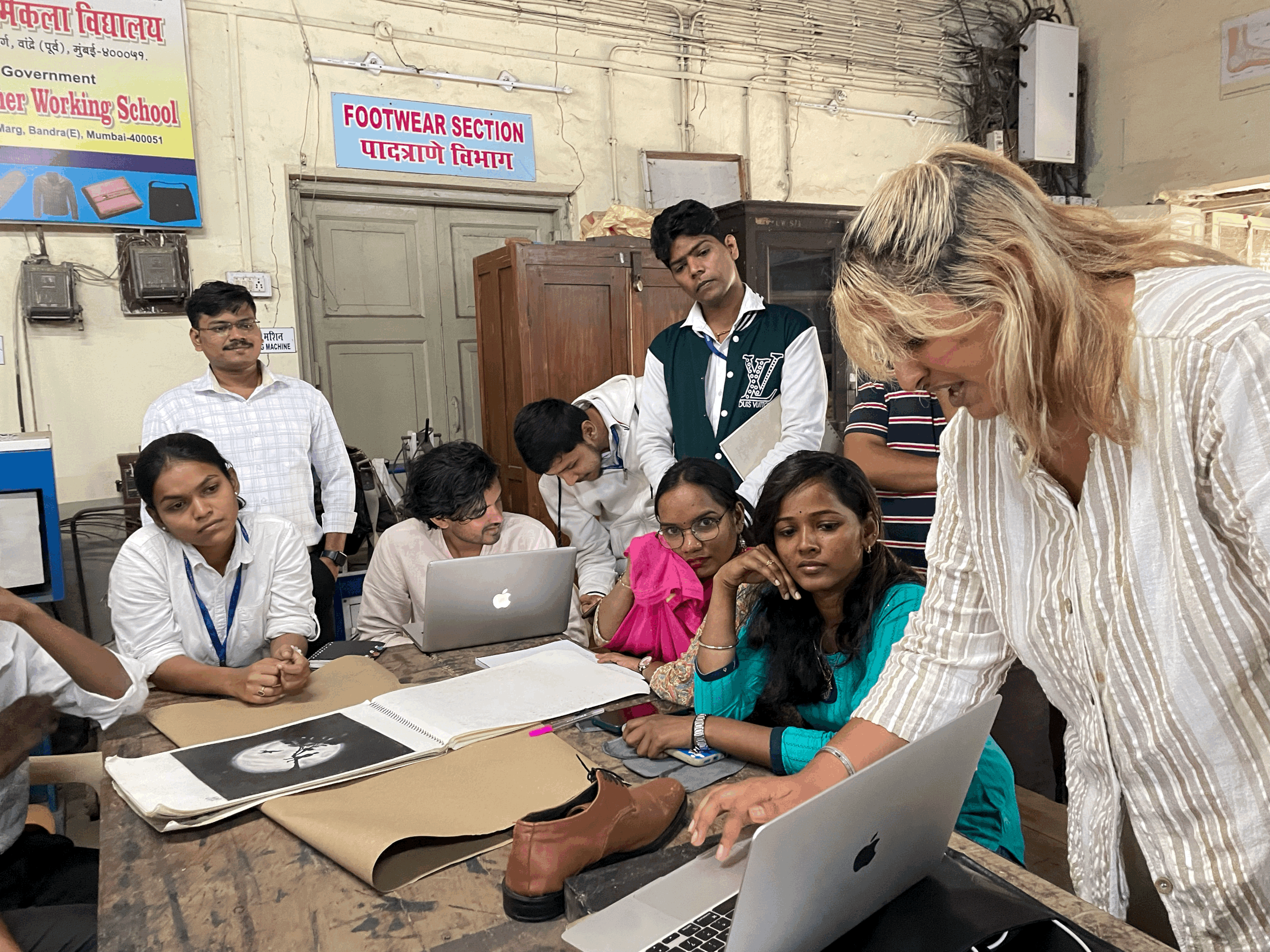Last. Saw. Workshops
The students who are currently enrolled in the leather and footwear technology programs of the Government Leather Working School (now under the jurisdiction of the Government Polytechnic Mumbai) grew up in the era of economic liberalization in India. Many of the students come from leatherworking and working class families who have earned their livelihoods through factory work and subcontracts offered by large multi-national corporations. Teaching staff at the school provide instruction on the technical aspects of leather production and coordinate internships for the students at local factories where they perform shop floor labour for minimal compensation. After obtaining certificates from the Government Polytechnic Mumbai, students often return to the family business, take up factory labour or start their own small businesses. With the support of the IARTS Textiles of India Grant, Foundation Chamar was able to run a series of workshops with students from the Government Leather Working School that was geared toward co-learning about the art history of leatherwork, experimenting with un/touch/able materials such as rubber waste and envisioning new economic possibilities for Indian leather workers. After completing the week of programming, interested students were invited to join the Chamar Studios collective and partake in our design, production and other activities.
The workshops started off by introducing the students to the fashion collections of Mumbai-based designers such as the bags designed by Chamar Studios and the footwear of Jeetinder Sandhu, showing how their experimental design practices and philosophical approach to materiality helped their products stand apart on the global fashion marketplace. This set the stage for an engaging week of dreaming and thinking outside of the box in a blend of Marathi, Hindi, Punjabi, Urdu, and English, where we had the opportunity to think alongside the students about the pressing issues shaping life in the northern suburbs of Mumbai: the dwindling life expectancy rate; the carcinogenic effects of airborne hexavalent chromium; the precarity of living under the contractual logics of neoliberalism; the dilapidated infrastructure of the Government Leather Working School; the lack of investment in their philosophical and artistic capabilities; and the feelings of hopelessness that have cropped up in the face of it all. These were accompanied by experiments where the students sought to create practical and informational products to support better material relations. Working in self-organized teams and groups, the students dreamed up a range of projects during the week of programming. Rather than offering one-size-fits-all workshops to the students, we worked with each cluster to further investigate their areas of interest that included: creating natural cleaners and polishes; building informative packages and labels to inform users how to best care for their leather goods; experimenting with form and shape; designing footwear to support the multiple configurations of feet; learning about the philosophy of Guru Ravidas and engaging with the reclaimed rubber waste material produced by Chamar Studios. We had the pleasure of interviewing two of the students who participated in the workshops about their project and the key takeaways that they took from the project, which we highly recommend that you take the time to listen to their brilliant proposed interventions in the practice of leather work.
What we learned through the process of running these workshops is that the students at the Government Leather Working School near Dharavi are just as brilliant as the students of theoretical physics who are studying at the top-ranked institutions in India, they just simply do not have access to the same high-tech facilities, financial capital and academic support as those more privileged students do. Unlike the philosophical humanities and the theoretical sciences, the Government Leather Working School holds onto a better dream where everyone should learn how to work directly with materials, to get their hands dirty and make products for everyday life. It is this dream for an education that remains rooted in the polluting force of earthly matter even when it enters dialogue with divine, enlightened knowledge that lays at the heart of our worldview at Foundation Chamar.
Given its close proximity to Bandra and the rising cost of living in Mumbai, the Government Leather Working School is being targeted by real estate developers who are hoping to demolish the colonial era building to make modern housing for the rising middle class of Mumbai. When the last remaining professor Chaudhary Sir retired before the onset of the pandemic, the management of the Government Polytechnic Mumbai opted against hiring a replacement in a move that signaled their intention to bring an end to technical leatherworking education in the State of Maharashtra. It is in the face of this grim context that Foundation Chamar hopes to continue the educational legacy of the Governmental Leather Working School that was started by B.G. Kher to support the economic prospects of Dalit and Muslim leatherworkers by transforming the colonial era educational institute into a Sustainable Materials School that will be at the forefront of waste and pollution sciences in India, at the same time as it equips its students with the material skills to live in the world without being wholly dependent on the market to purchase goods. It is there that we might finally build lasting relations with all the matter of this world in all its shape-shifting states: animacy and inertia, usefulness and disposability, volatility and stability.
Look through The Leather Archive of India to learn more about the history of the Government Leather Working School. For more about our proposal to open a Sustainable Materials School, read The Pollution Report.














